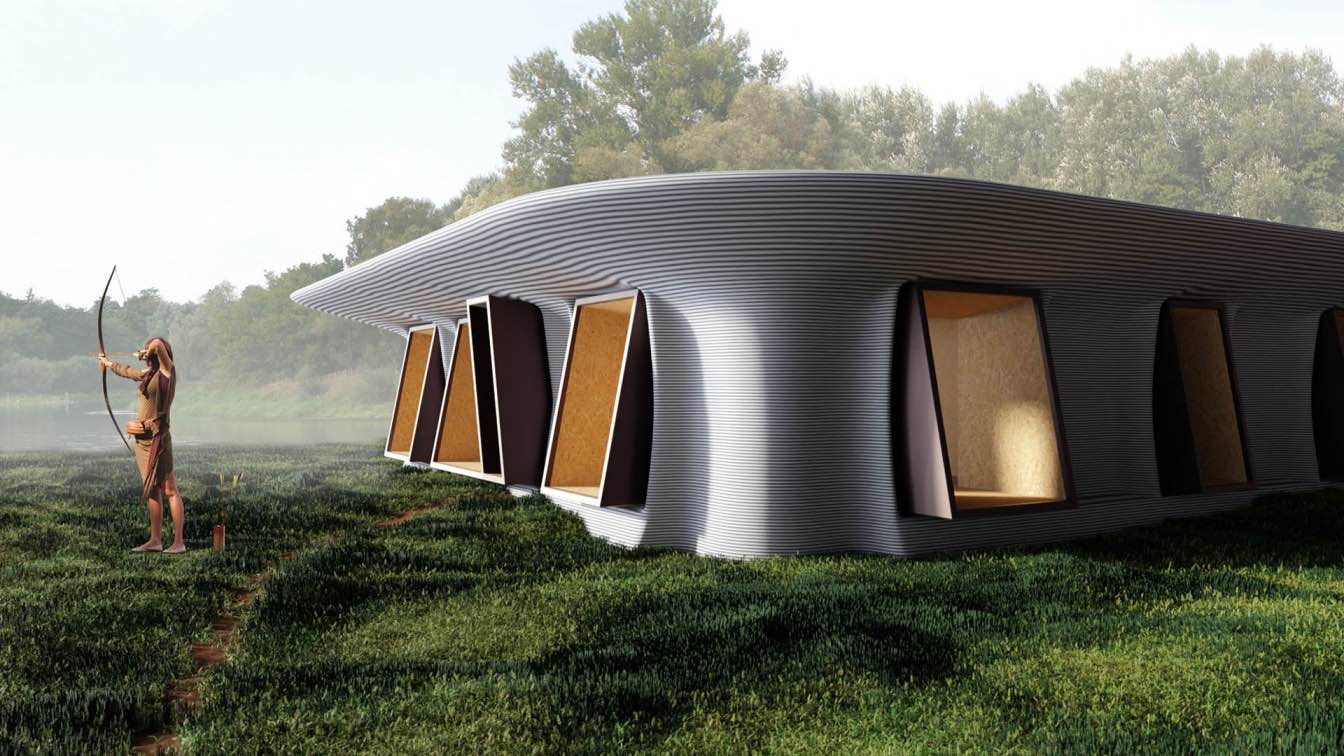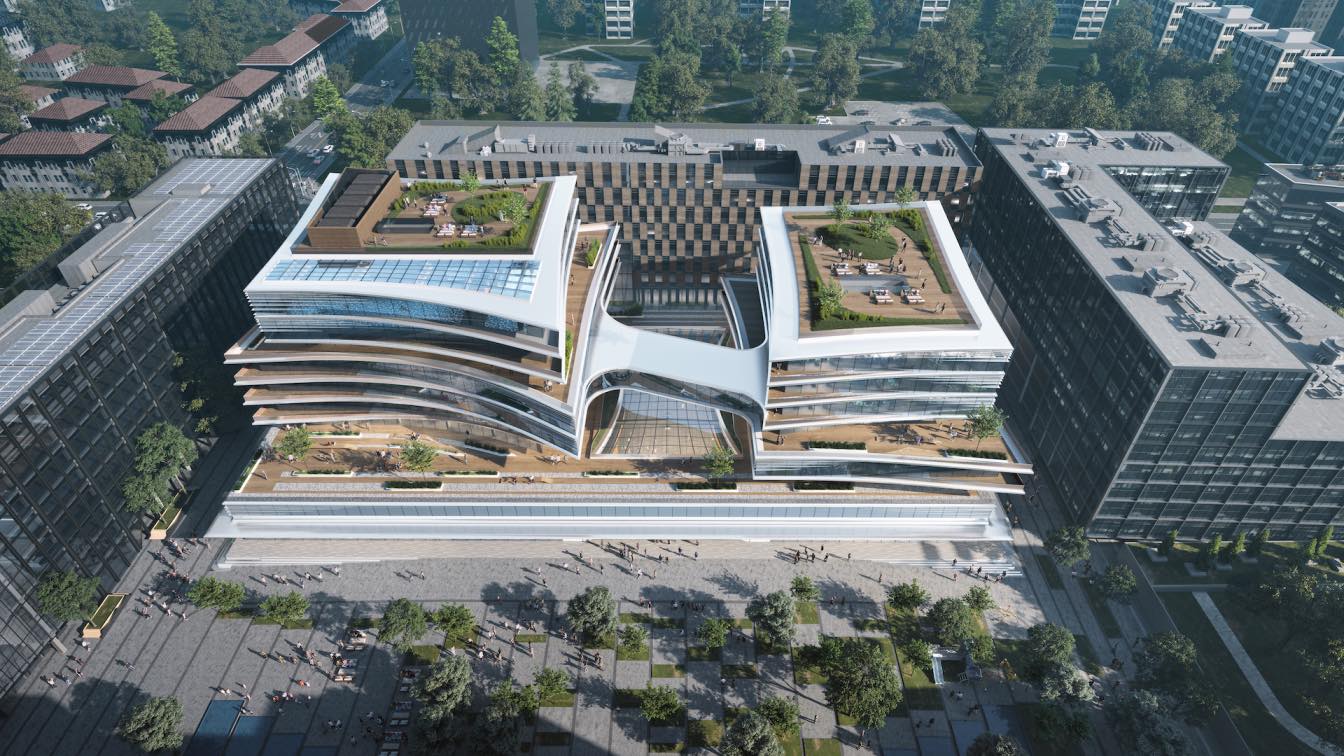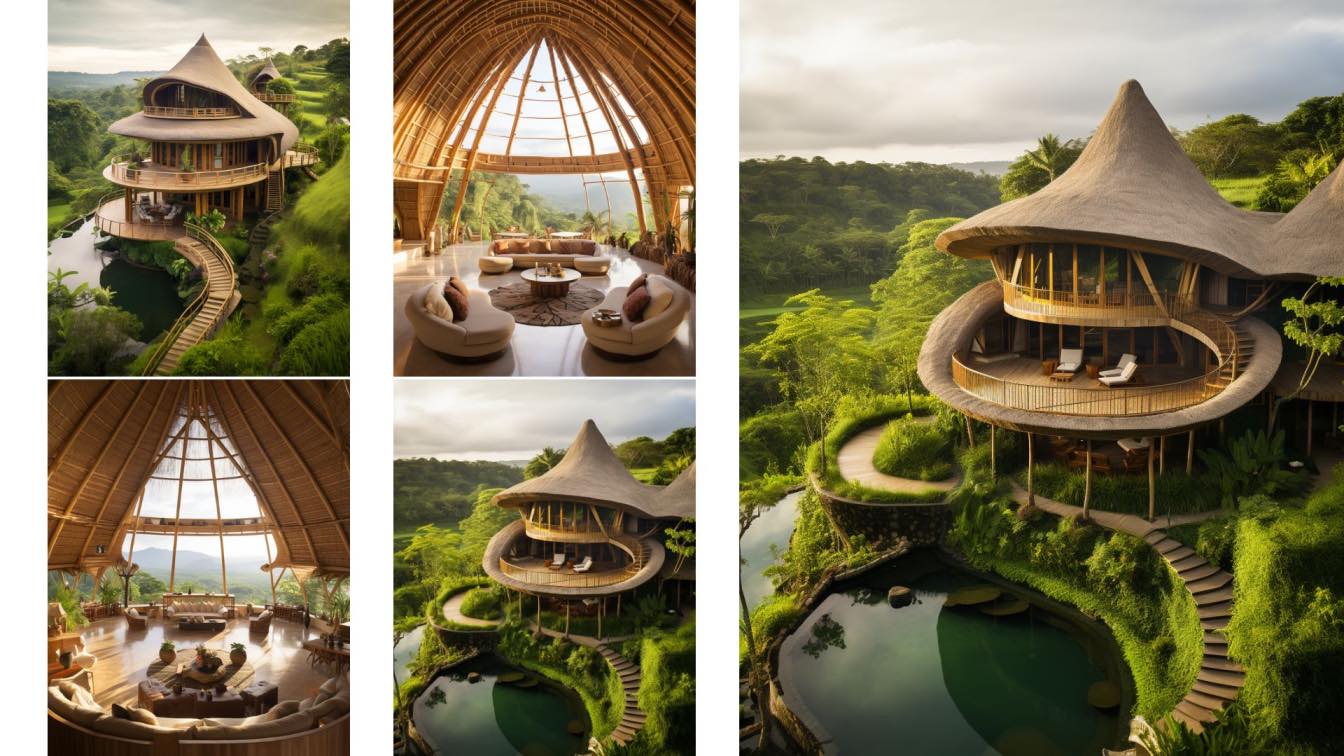Tactus Design Workshop: The Rain Catcher is a vision for a detached house built out of a 3D-Printed shell in crude earth or mixed compounds, filled with eco-friendly materials. The design envisages a design that would:
1. Reduce carbon footprint for its construction by using a combination of site-sourced materials and off-site pre-formed components, reducing material transport on site.
2. Avoid material wastage for refurbishment, allowing for flexible and easy internal alteration of the layout.
3. Be self-sufficient, making the most of the natural resources and climate conditions in the UK.
The Design takes the points of the 2030 Challenge and also considers the recently learned lessons from the lockdown, where size and configuration of homes has been challenged to respond to different uses and requirements.

Design
The house is shaped on a square footprint with its internal space divided by two fixed cores into seven potential rooms. The cores host the kitchen, bathroom and services. The seven rooms could be assigned and closed at occupants’ wish, creating larger spaces where required. Since internal circulation is maintained by the cores and the side corridors, it is possible to create work & live or co-living units from the base scheme. The full-height windows create the opportunity to provide potential independent booths for study and work.
Materials
The outer shell would be 3D-Printed on site using local materials, ideally clay-based earth or no-cement concrete mixes. By 2030 it is expected that these experimental materials and their application should be broader and more tested. The use of site-sourced material with robotic machines for the shell would determine a steep decrease in the emissions generated by the materials’ transport.
Timber would be implemented as a structural material for the internal cores and the flooring in conjunction with OSB panels as boarding material. The panels could be painted or covered to the occupants’ wish.
Pre-cut OSB and plywood panels would form the honeycomb shaped roof structure, which design covers the entire house. Since the honeycomb is to be rigid and work under traction and compression, the plywood panels would absorb the forces at traction and the OSB panels would work to compression and provide lateral restraints.
Recycled materials or natural fibre could be considered for the insulation, while the roof could be covered with recycled plastic tiles to contribute towards theembodied carbon reduction.

Sustainable vision
The idea of a house being off-grid means it has to be self sufficient for heating, water provision and electricity.
The roof is designed to allow rainwater collection for internal use once filtered. Assuming the average precipitation in the UK regions, the water collected could satisfy a 95 l/p/day for 6 occupants, in line with the 2025 Targets and amply meeting the 2030 Targets.
Heating would be provided with the installation of heat pumps either below or aside the house. Electricity would be provided by a separate wind turbine. In addition, all the windows are provided with fully transparent PV panels in front of the glazing, as an additional source of electricity.









Connect with the Tactus Design Workshop



.jpg)

